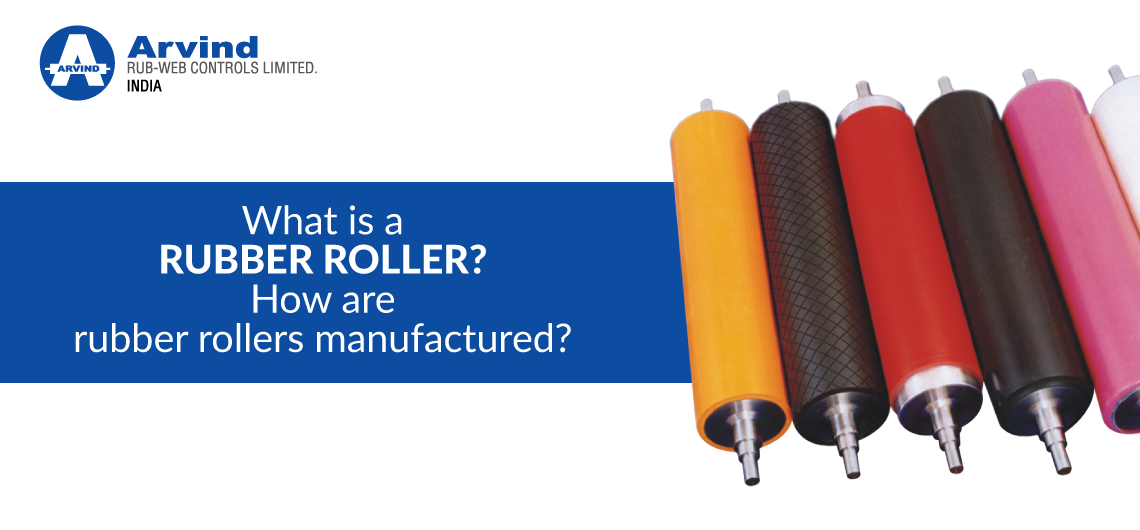
At the outset, it’s pivotal to understand Rubber Roller, before plunging into deep insight about the subject. The manufacturing sector is abuzz about the importance and impact created by the product.
No point in making things cryptic. In this blog, we are going to focus on numerous indicators pertaining to the product. In layman’s language, a rubber roller is a sophisticated product comprising of an inner round shaft made up of metal, which is coated or covered by a designated compound elastomer or rubber.
The inner shaft could be of different material, depends on industry requirements. Considering the current manufacturing landscape, the inner shaft is available in steel, aluminum, and carbon fiber. As far as the outer layer is concerned, it’s normally manufactured using polyurethane, silicone, EPDM, neoprene, and natural rubber.
What’s so special about Industrial Rubber Rollers?
There are definitely reasons galore behind employing rubber rollers in myriad manufacturing industries. Demonstrating unique properties associated with elastomers, including impact strength, shock absorption, tensile strength, abrasion resistance, high coefficient of friction, and controllable degree of hardness, the product enables a seamless business process. Similar unique features make them perfect for handling a wide gamut of manufactured goods, including textile, and food.
The product assumes humongous significance for application wherein high surface durability with low to medium hardness is required. Besides, the product has the efficiency to withstand numerous degrading forces generated through mechanical and thermal factors.
Applications
Fabricated using state-of-the-art technology, the new age industrial rubber rollers are being employed to perform a wide range of applications. These include Printing, Film Processing, Material Conveying, Squeezing, Pressing, Laminating, Feeding, Spreading, Coating, Grains Milling, and wrinkle elimination among others.
What are the benefits of using an industrial rubber roller
Keeping in view the myriad challenges and benefits of the manufacturing industry, industrial rubber rollers are economical, and advantageous with brilliant mechanical properties.
Moving forward, now let’s shift our attention towards another important subject pertaining to the industrial rollers – the manufacturing process.
How to manufacture rubber rollers?
The manufacturing process comprises a few sophisticated steps, including the fabrication of the roller core, rubber compounding, bonding, covering, vulcanizing, grinding, and balancing
Roller Core Fabrication and Preparation
Now, let’s move on to another significant part of this blog – the manufacturing process of industrial rubber rollers.
Roller core fabrication process
Employing the premium quality metal sheet, expert technicians, engineers, and welders fabricate a hollow tube. It’s executed through sheet rolling and welding. Flanges or support discs are cut according to the size and specifications to fit inside the cylinder. On the other hand, a shaft is manufactured using a lathe machine with the required cylindrical core. Dimensions and specifications should match the roundness and balance of the roller.
Flanges fabricated at the beginning are welded to the ends of the cylinder along with the shaft. In order to make it resistant to corrosion and eliminate contaminants, it goes through secondary processes, including blasting and cleaning.
Rubber Compounding
As far as rubber compounding is concerned, it’s a formulation process wherein a few selected chemicals are added to the raw rubber. Why? The objective is to further strengthen its mechanical and chemical properties and support in processability and vulcanization. Some of the common compounding ingredients are filler systems (carbon black, silica, calcium carbonate), stabilizer systems (antioxidants, antiozonants), and vulcanizing agents (sulfur, peroxide).
Bonding and building
Bonding involves adhering the rubber layer/ cover to the roller’s surface using the premium quality adhesive or bonding agent or an ebonite layer. Post this process, the rubber building process begins. It comprises covering the rigid roller core with the rubber compound.
Vulcanization and cooling
It’s one of the significant processes followed by manufacturers to manufacture a wide range of rubber rollers, including Flexo Printing Rubber Roller. It’s employed to make the rubber more stable, facilitating it to resist the impact of solvents, heat, and cold. The process comprises creating crosslinks between the rubber compound.
Crowning
Under this process, the roller is shaped into different diameters along its length. It leads to a tapered, convex, or concave shape, such properties facilitate a slender deflection when pressed against a load.
Groove cutting
This sophisticated process helps in creating particular depressed and elevated regions on the roller’s surface. Such measures assist to prevent slippage, prevent heat dissipation, and to apply embossings and print patterns.
Grinding
The process of grinding smoothens the surface of the rubber layer. It eliminates protruding parts and leveling overlapping strips.
Roller Core Balancing
Leveraging the high-end computer-aided dynamic balancing system, rollers are evaluated, inspected, and corrected.
Summary
One of the most significant reasons behind using the rubber roller is its unique elastic features. On the contrary metal crafted rollers fail to offer any favourable elasticity. Metal isn’t resistant to corrosion, scratch, and dent. On the other hand, rollers made of other materials like fiber-reinforced composite aren’t easily available. Furthermore, fiber-reinforced composite rollers are expensive, scales production cost. Employing these wouldn’t be a wise business decision.


